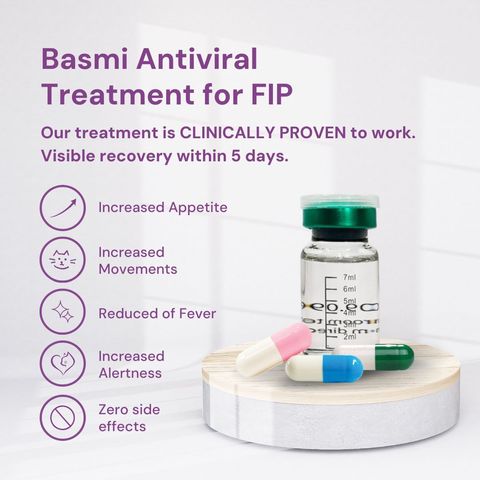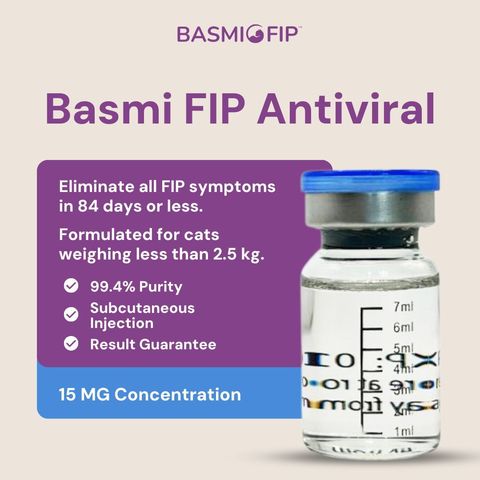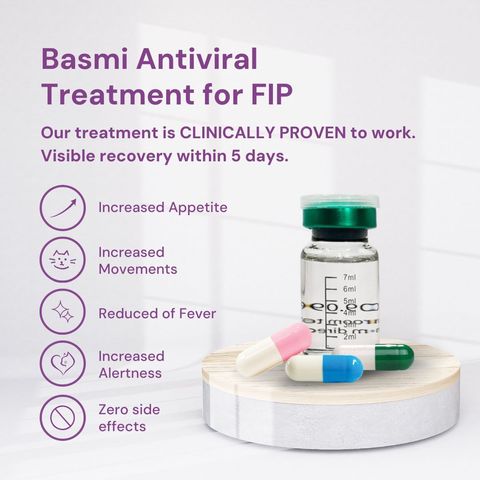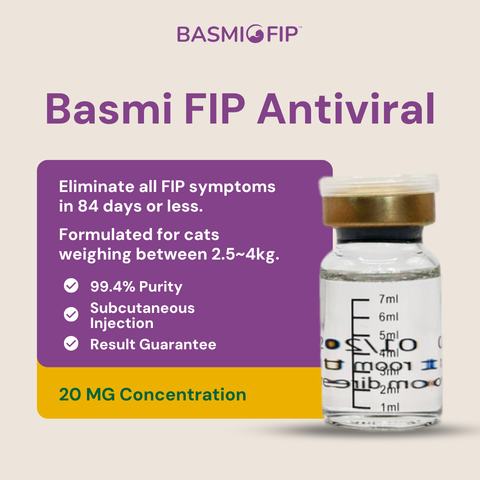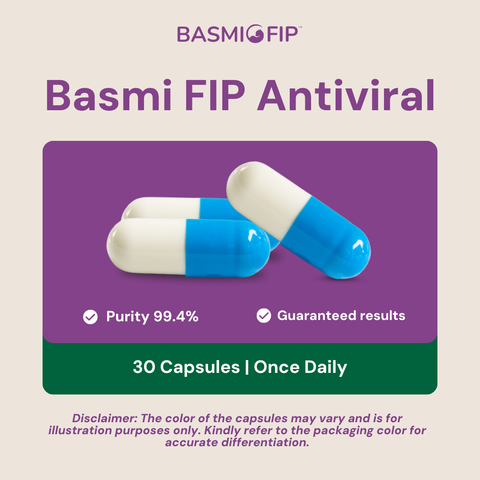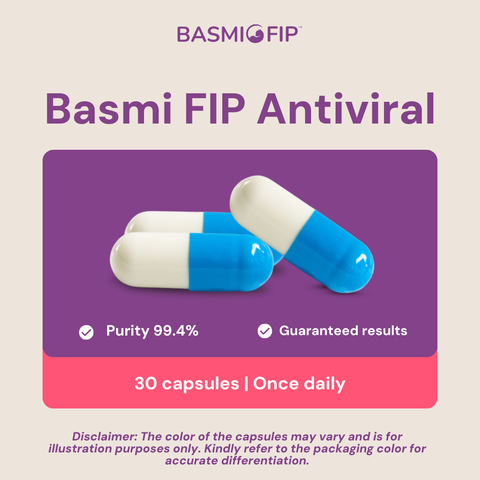
Feline Infectious Peritonitis (FIP) is a serious viral infection impacting cats worldwide. Affecting around 1-2% of the global cat population annually, FIP is caused by a mutation of the feline coronavirus. This disease can be devastating if left untreated, with a mortality rate reaching up to 96%. Early detection and intervention are critical in managing FIP and improving the chances of survival for affected cats.
Causes of FIP in Cats
The primary cause of FIP in cats is the mutation of the feline coronavirus. While most cats infected with the feline coronavirus exhibit no symptoms or only mild gastrointestinal issues, a small percentage experience a mutation of the virus, leading to FIP. Transmission of the virus occurs through fecal-oral routes, with kittens and young cats being more susceptible.
Symptoms of FIP in Cats
Recognizing the symptoms of FIP early is crucial for timely intervention. The symptoms vary depending on whether the cat has the wet or dry form of the disease.
FIP Symptoms: Behavioral Changes
Cats infected with FIP often exhibit significant behavioral changes. A previously active and playful cat may become lethargic and show a marked decrease in activity levels. This change is often one of the first signs that something is wrong.
FIP Symptoms: Physical Health
Loss of appetite and refusal to drink water are common symptoms in cats with FIP. This leads to rapid deterioration in health, marked by significant weight loss. Cats may also exhibit persistent high fevers that do not respond to typical treatments.
Neurological Symptoms of FIP
In some cases, FIP affects the nervous system, leading to neurological symptoms. These can include seizures, difficulty walking, and behavioral changes such as increased aggression or confusion.
Respiratory Symptoms of FIP
Cats with the wet form of FIP often experience respiratory issues due to fluid accumulation in the chest. This can make breathing difficult and lead to rapid, labored breathing.
Gastrointestinal Symptoms of FIP
One of the hallmark signs of wet FIP is abdominal swelling due to fluid buildup. Cats may also suffer from diarrhea and vomiting, further complicating their health status.
Eye Inflammation from FIP
FIP can cause significant eye inflammation, leading to redness, discharge, and sometimes blindness if left untreated. These ocular symptoms are more common in the dry form of the disease.
Jaundice in FIP Cats
Jaundice, indicated by yellowing of the gums, ears, and eyes, is another symptom of FIP. This indicates liver involvement and is often seen in the later stages of the disease.
Anemia and Stress in FIP Cats
Blood tests for cats suspected of having FIP often reveal anemia. Additionally, affected cats may exhibit signs of stress, such as excessive grooming or withdrawal from social interactions.
Urinary Issues in FIP Cats
Cats with FIP may also develop urinary problems, such as reduced urination. This is often a sign that the kidneys are being affected by the disease.
Early Detection of FIP
Early detection is vital for improving the prognosis of cats with FIP. Regular veterinary check-ups and being alert to the symptoms can lead to earlier diagnosis and treatment, potentially saving the cat's life.
Diagnosing FIP in Cats
Diagnosing FIP involves a combination of clinical signs, laboratory tests, and sometimes exploratory surgery. Common diagnostic tools include blood tests, imaging, and analysis of fluid samples from the abdomen or chest.
FIP in Cats: Risk Factors
Certain breeds, such as purebreds, are more susceptible to FIP. Additionally, environments with high cat populations, like catteries and shelters, increase the risk of transmission and mutation of the virus.
FIP Treatment Options
While FIP was once considered untreatable, advancements in veterinary medicine have introduced effective treatment options. Supportive care and antiviral medications are now available to manage the disease.
GS-441524: A Breakthrough Treatment
GS-441524 has emerged as a groundbreaking treatment for FIP. Clinical trials have shown that this antiviral drug can significantly improve survival rates, with effectiveness reported in over 87% of treated cats. The FIP drug GS-441524 from Basmi FIP has undergone clinical trials and proven to be highly effective in curing cats affected by FIP. With a treatment efficacy rate exceeding 87%, GS-441524 is not just a medication but also a remedy for the fear that FIP cannot be cured.
How GS-441524 Works
GS-441524 works by inhibiting the replication of the virus within the cat's body. This antiviral action reduces the viral load, allowing the cat's immune system to recover and fight the infection more effectively.
Administering GS-441524
The drug is administered via subcutaneous injection or orally. Dosage and administration depend on the severity of the disease and the cat's response to treatment. Regular monitoring by a veterinarian is essential.
Supporting Cats During FIP Treatment
Caring for a cat undergoing FIP treatment involves close monitoring, providing a stress-free environment, and ensuring they receive adequate nutrition and hydration. Regular veterinary check-ups are crucial to track progress and adjust treatment as needed.
Community Support for FIP Cat Owners
Joining online community and support networks can provide emotional support, share experiences, and offer practical advice for managing a cat with FIP. These communities can be a valuable resource for coping with the challenges of this disease.
Understanding and managing FIP in cats involves early detection, effective treatment, and supportive care. Advancements in veterinary medicine, such as GS-441524, offer new hope for cats diagnosed with this once-fatal disease. By staying informed and proactive, cat owners can improve the quality of life and survival chances for their beloved pets.
FIP is a serious disease, but early detection can help improve the chances of a positive outcome. If your cat is showing symptoms of FIP, take them to your nearest veterinarian for proper diagnosis and treatment. If you have any questions or concerns about FIP and its treatment, don't hesitate to contact us on WhatsApp or visit our Instagram for more information. You can also read the complete guide to treating FIP in cats by clicking here!
